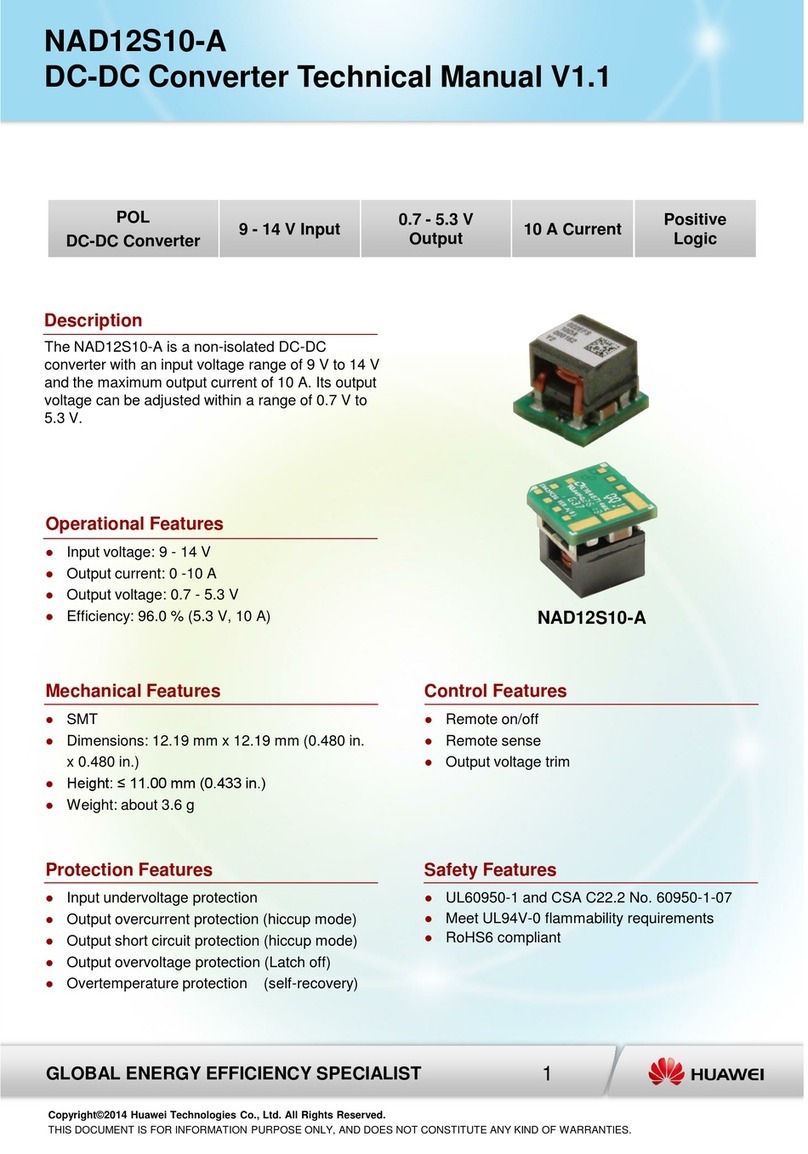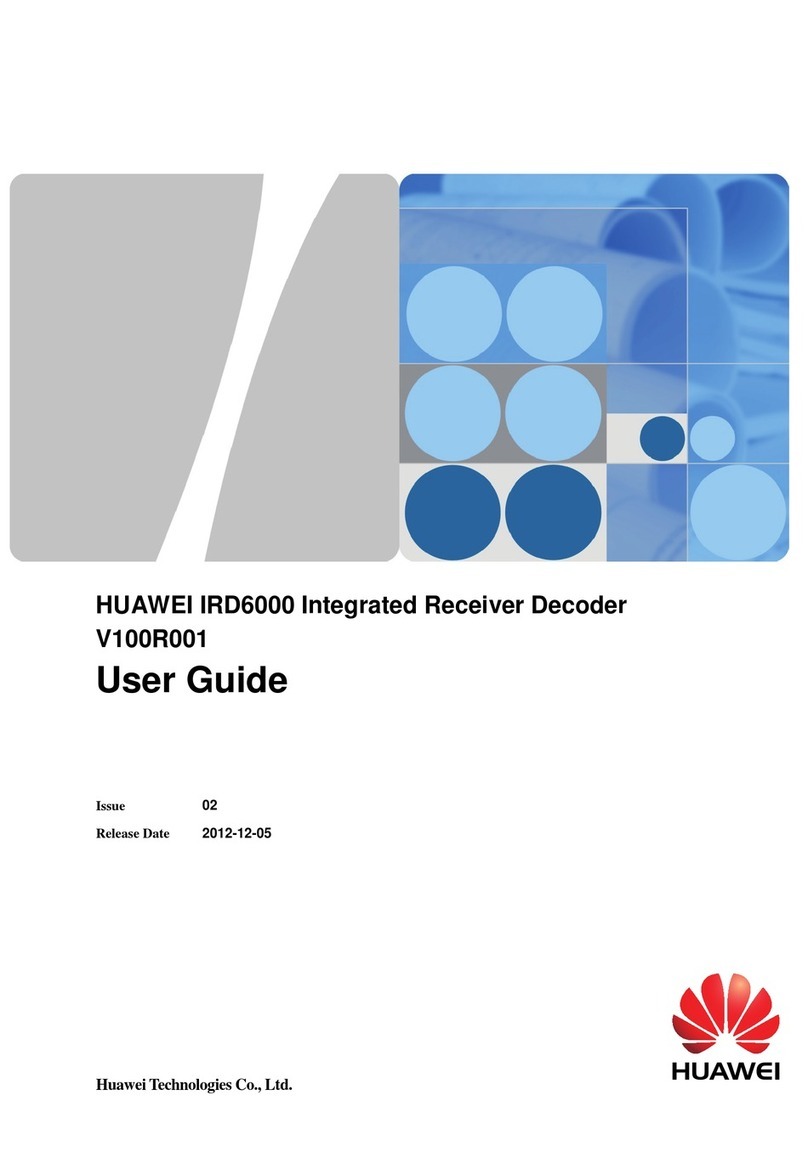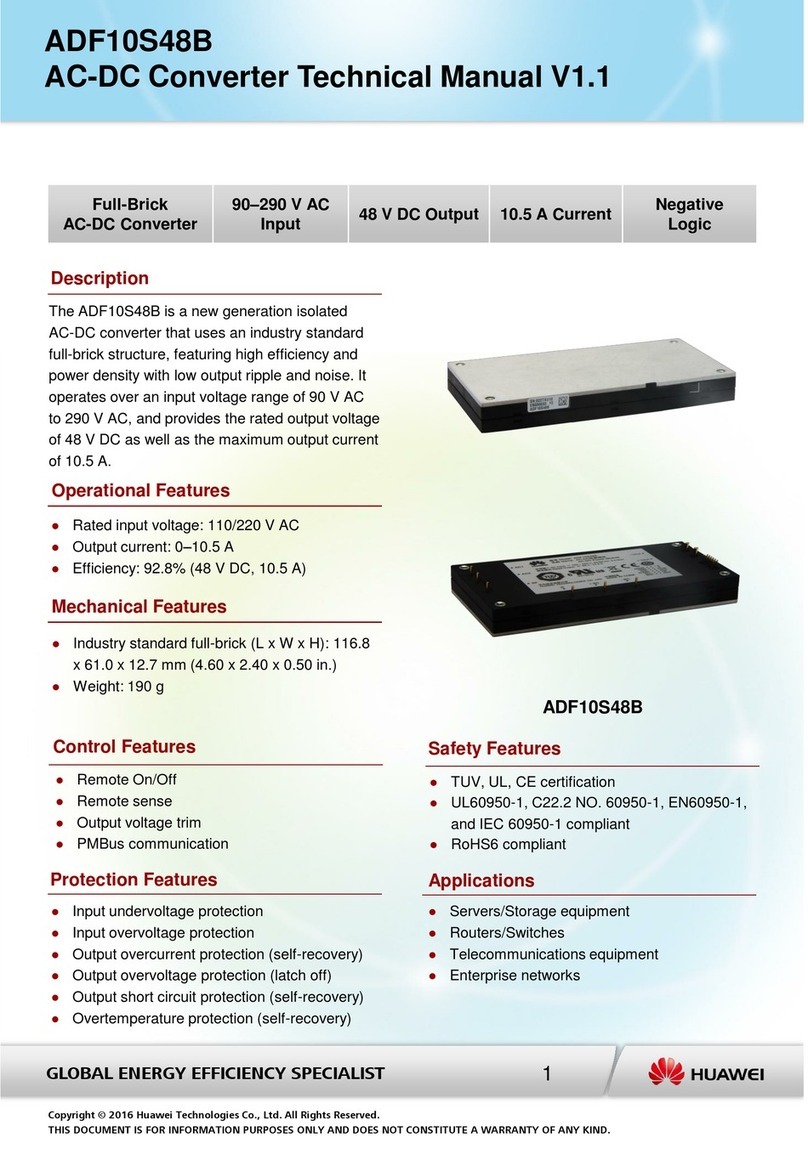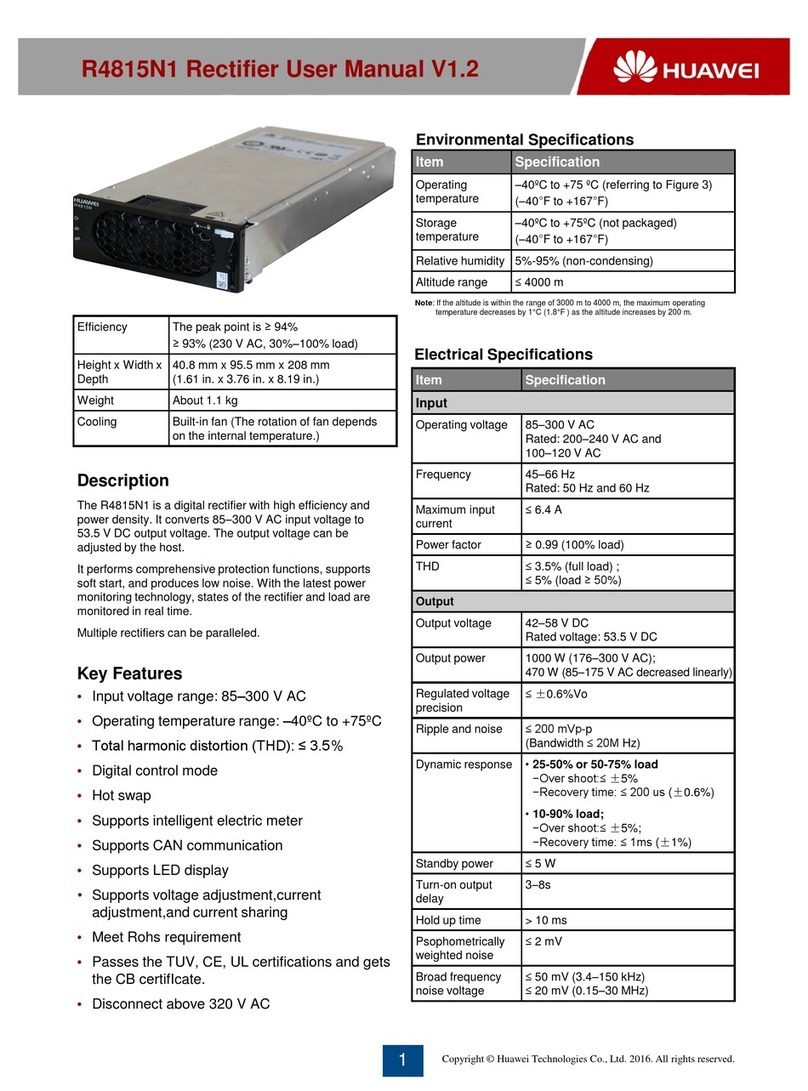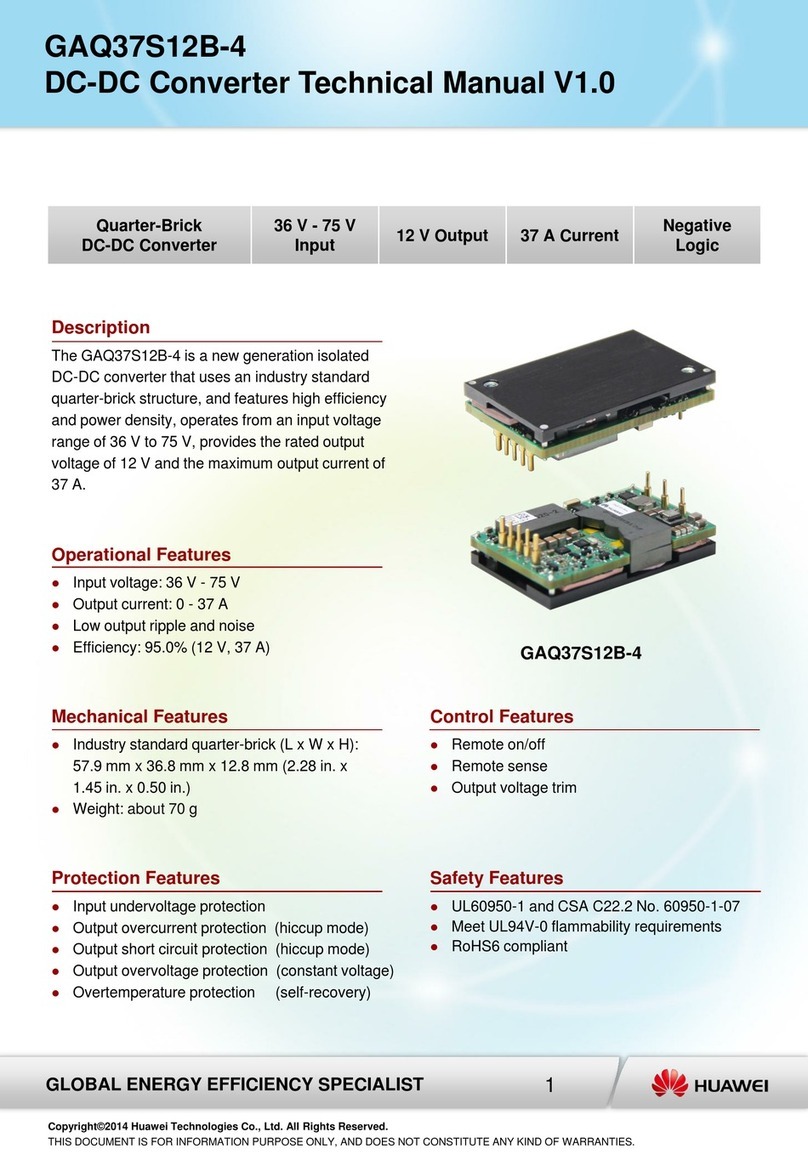9
GLOBAL ENERGY EFFICIENCY SPECIALIST
GAQ40S3V3B
DC-DC Converter Technical Manual V1.4
Reverse polarity protection is recommended
under installation and cabling conditions where
reverse polarity across the input may occur.
Vin(+)
Vin(–)
Vin(+)
Vin(–)
The converter has no internal fuse. To meet
safety and regulatory requirements, a 7 A fuse is
recommended.
For the acceptance standard, see the DC-DC
Converter EMC Acceptance Manual.
Recommend Reverse Polarity
Protection Circuit
Figure 19: Recommend reverse polarity protection
circuits
Recommended Fuse
EMC
Figure 20: EMC test set-up diagram
DC-DC
converter Load
C1 L1
C4 C5
C2 C3 C6
Vin(+)
Vin(–)
Vout(+)
Vout(–)
C1: Surface mount device (SMD) ceramic capacitor (100
V/1000 nF/X7R/1210)
C2: SMD ceramic capacitor (100 V/100 nF/±10%/X7R/1206)
L1: Common-mode inductor (single phase, 1320 µH/±25%/4
A/R5K/ 21 mm x 21 mm x 12.5 mm [0.83 in. x 0.83 in. x 0.49
in.]). The chip component with the same specifications can also
be used.
C4, C5: High-pressure resistant chip ceramic capacitor (22
nF/1000 V/X7R/1210)
C3: Electrolytic capacitor (100 µF/100 V)
C6: Electrolytic capacitor (470 µF/25 V)
Vs
The fuse current should be 1.5 to 2 times the maximum
operating current in actual use.
Input Undervoltage Protection
The converter will shut down after the input
voltage drops below the undervoltage protection
threshold for shutdown. The converter will start
to work again after the input voltage reaches the
input undervoltage protection threshold for
startup. For the Hysteresis, see the Protection
characteristics.
Output Overcurrent Protection
The converter equipped with current limiting
circuitry can provide protection from an output
overload or short circuit condition. If the output
current exceeds the output overcurrent
protection set point, the converter enters hiccup
mode. When the fault condition is removed, the
converter will automatically restart.
Output Overvoltage Protection
When the voltage directly across the output pins
exceeds the output overvoltage protection
threshold, the converter will enter hiccup mode.
When the fault condition is removed, the
converter will automatically restart.
Overtemperature Protection
A temperature sensor on the converter senses
the average temperature of the module. It
protects the converter from being damaged at
high temperatures. When the temperature
exceeds the overtemperature protection
threshold, the output will shut down. It will allow
the converter to turn on again when the
temperature of the sensed location falls by the
value of Overtemperature Protection Hysteresis.
MTBF
The MTBF is calculated according to the
Telcordia, SR332 Method 1 Case3.
